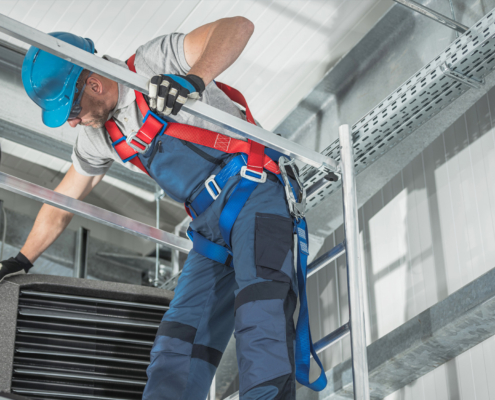 https://sammechanical.com/wp-content/uploads/2025/09/HVAC-Warning-Signs-Your-Heating-System-Could-Fail-Before-Winter.jpg
1250
2000
AbstraktMarketing
/wp-content/uploads/2024/01/sam-logo-crete-300x154.png
AbstraktMarketing2025-09-25 15:56:492025-09-25 15:57:15HVAC Warning Signs Your Heating System Could Fail Before Winter
https://sammechanical.com/wp-content/uploads/2025/09/HVAC-Warning-Signs-Your-Heating-System-Could-Fail-Before-Winter.jpg
1250
2000
AbstraktMarketing
/wp-content/uploads/2024/01/sam-logo-crete-300x154.png
AbstraktMarketing2025-09-25 15:56:492025-09-25 15:57:15HVAC Warning Signs Your Heating System Could Fail Before WinterHow to Achieve the Perfect Indoor Climate With Your Home HVAC System
Maintaining a consistently comfortable indoor environment can be an uphill battle for many homeowners. Between uneven temperatures, humidity imbalances, and skyrocketing energy bills, achieving the perfect home climate requires both knowledge and strategy. Let’s explore how understanding HVAC basics, insulation, zoning, and timely upgrades can help you stay cool in summer, cozy in winter, and comfortable year-round.
The Importance of a Comfortable Home Climate
A balanced indoor climate doesn’t just keep you comfortable—it boosts the quality of your day-to-day life. When your home hovers around an ideal temperature of approximately 68–72°F in cooler months and 72–78°F in warmer seasons, you’ll enjoy better sleep, reduced energy costs, and fewer issues with mold or allergens.
A well-tuned home HVAC system helps maintain these levels, creating a stress-free environment where you can work productively, relax at the end of a long day, and promote overall well-being for everyone in the household. By giving attention to factors like airflow, insulation, and moisture control, homeowners ensure that the investment in comfort translates into tangible benefits, including healthier air quality and more consistent room-to-room temperatures.
The Impact of Poor Indoor Climate
Even if your HVAC equipment is running, your home’s climate may not be ideal. Extreme temperature fluctuations, excessive moisture, and weak airflow all play significant roles in diminishing comfort:
- High or Low Temperatures: When certain areas run too hot or too cold, your home’s HVAC system struggles to stabilize conditions, causing discomfort and escalating energy bills.
- Excessive Humidity Levels: Moisture-laden air can lead to mold growth, musty odors, and damage to wood and other materials inside your home.
- Inadequate Airflow: Weak circulation prevents fresh, conditioned air from reaching every room, resulting in stuffiness and uneven temperatures.
- Inconsistent Room Temperatures: Poor insulation or ductwork leaks cause some rooms to overheat while others remain frigid, undermining a truly comfortable environment.
When these issues persist, even routine daily activities can feel uncomfortable. Plus, you may notice certain rooms feel significantly warmer or colder simply because of how air flows through your home, the location of vents, or inadequate insulation in specific areas.
Home HVAC System Tips for Achieving the Ideal Indoor Environment
Ensure your home HVAC system is equipped to handle fluctuations in external weather and interior demands to maintain stable indoor conditions. You can help your home HVAC system deliver consistent temperatures throughout every room by leveraging various strategies.
Smart Thermostats
Upgrading to a smart thermostat is one of the simplest yet most impactful ways to fine-tune home comfort. These devices learn your routine, automatically adjusting temperatures when you’re away or asleep to reduce energy waste. Many models allow for remote monitoring and control via a smartphone app, ensuring you can tweak settings anywhere, anytime. A smart thermostat also helps your HVAC system respond more efficiently to outdoor fluctuations in a place with frequent temperature changes.
Zoning Systems
A zoning system divides your home into distinct “zones,” each regulated by its own thermostat and set of dampers in the ductwork. Instead of conditioning your entire house at once, you can focus on heating or cooling where it’s needed most, whether that’s the kitchen during meal prep or upstairs bedrooms at night. This targeted approach improves overall comfort and cuts energy bills by reducing unnecessary strain on the HVAC system. If some rooms in your home typically run hotter or colder than others, zoning can balance conditions effectively.
Routine Maintenance
Regular upkeep is crucial to keeping any home HVAC system running at its best. Scheduling seasonal tune-ups—ideally once in the spring and once in the fall—allows a professional to inspect, clean, and fine-tune crucial components such as filters, coils, and fans. A well-maintained system experiences fewer breakdowns, offers improved energy efficiency, and delivers more consistent indoor temperatures. Staying on top of routine maintenance also helps identify small problems before they evolve into major, costly repairs.
Proper Insulation
Even the most sophisticated home HVAC system can’t fully overcome insufficient insulation. If hot air seeps in during summer or warm air escapes in winter, your equipment works overtime to compensate. Upgrading or adding insulation in your attic, walls, and even around ductwork can dramatically improve climate control, helping your system maintain consistent temperatures throughout the house. Better insulation also reduces energy consumption, cutting monthly utility costs while enhancing comfort.
Optimizing Airflow and Ductwork
Issues with ductwork, such as leaks or poor layout, can drastically reduce HVAC efficiency and lead to uneven temperatures. Sealing leaks, adding insulation around ducts in unconditioned areas, and ensuring clean vents are essential for smooth airflow. Arranging furniture and décor to avoid blocking vents and returns promotes a healthier circulation of conditioned air. If you suspect your ductwork is causing problems, consider consulting a professional for a thorough evaluation and possible redesign.
Upgrading Filtration and Ventilation
Maintaining your home’s indoor air quality is a top priority for many residents. Investing in high-efficiency filters, such as MERV 13 or HEPA filters, helps remove airborne allergens, dust, and other particles. Installing or maintaining mechanical ventilation systems, like energy recovery ventilators (ERVs), can bring in fresh, filtered air while expelling stale indoor air. Keeping indoor air free of contaminants can make the environment more comfortable and help your home HVAC system operate without unnecessary strain.
Discover the importance of managing your home’s indoor air quality to keep your family healthy and comfortable.
Other Factors That Could Be Impacting Your Home’s Indoor Climate
Although your HVAC system is central to creating a perfect home climate, additional factors can undermine even the best equipment. Addressing these issues can help you fine-tune comfort levels without putting excess stress on your heating and cooling units.
- Window and Door Seals: Drafty windows or doors let conditioned air leak out, so ensuring proper weatherstripping can significantly improve climate control.
- Sunlight Exposure: Certain rooms may overheat due to direct sun, necessitating blinds, curtains, or window films to regulate heat gain.
- Home Layout and Design: High ceilings, open-concept layouts, and large open staircases can all influence airflow and how temperatures move throughout the house.
- Appliance Heat: Large appliances like ovens or dryers can raise indoor temperatures, especially in areas with poor ventilation.
- Occupant Behavior: Frequent door openings, large gatherings, or continuous cooking and baking can temporarily shift your home’s thermal balance.
Simple adjustments—like sealing a window crack or rearranging furniture away from vents—can make a world of difference. By systematically evaluating these contributing factors, you can optimize every aspect of your home’s comfort alongside a well-maintained HVAC system.
Signs Your Home HVAC System Needs an Upgrade
Even the best-maintained systems eventually reach the end of their optimal performance. Whether it’s due to outdated technology or natural wear and tear, an HVAC upgrade can significantly improve comfort, efficiency, and air quality within your home. Below are key indications it might be time for a replacement.
Excessive Repairs and Rising Costs
If you find yourself frequently calling for repairs, or notice that each service visit becomes more expensive, your HVAC system may be on its last legs. Repeated component failures often signal that the unit is struggling to keep up, making an upgrade a more cost-effective solution in the long run.
Inconsistent or Insufficient Cooling and Heating
A system that was once reliable but now leaves certain areas sweltering and others frigid could be showing age-related inefficiency. If no amount of routine maintenance or airflow improvements resolves the disparities, replacing the system may be the only way to achieve uniform comfort.
High Energy Bills
Gradual increases in utility bills—even after maintenance—often indicate an aging or inefficient HVAC system. Thanks to advancements in technology and design, newer models, especially those carrying ENERGY STAR® certifications, deliver remarkable savings in monthly operating costs.
Unusual Noises or Smells
Rattling, banging, or clanking noises could be signs of a failing compressor or other mechanical issues. Musty or burning odors might indicate mold growth, wiring problems, or an overheating motor. These are red flags that your equipment might need more than just a simple repair.
System Age
Most HVAC units last about 10 to 15 years, depending on usage and maintenance. If yours is approaching or surpassing this range, start researching modern replacements before a total breakdown leaves you without cooling or heating at a critical time.
Optimize Your Home HVAC System With SAM Mechanical
Achieving the perfect indoor climate hinges on a balanced approach—addressing insulation, ventilation, airflow, and the overall condition of your HVAC system. At SAM Mechanical, we specialize in providing homeowners with top-notch advice, routine maintenance, and essential upgrades to ensure optimal comfort year-round.
Don’t leave your home’s indoor climate up to chance—reach out to our team of experts for personalized solutions tailored to your unique space. With our guidance and expertise, you can enjoy energy savings, better sleep, and a consistently comfortable environment for everyone under your roof.
Share This Post
More Like This
 https://sammechanical.com/wp-content/uploads/2025/09/HVAC-Warning-Signs-Your-Heating-System-Could-Fail-Before-Winter.jpg
1250
2000
AbstraktMarketing
/wp-content/uploads/2024/01/sam-logo-crete-300x154.png
AbstraktMarketing2025-09-25 15:56:492025-09-25 15:57:15HVAC Warning Signs Your Heating System Could Fail Before Winter
https://sammechanical.com/wp-content/uploads/2025/09/HVAC-Warning-Signs-Your-Heating-System-Could-Fail-Before-Winter.jpg
1250
2000
AbstraktMarketing
/wp-content/uploads/2024/01/sam-logo-crete-300x154.png
AbstraktMarketing2025-09-25 15:56:492025-09-25 15:57:15HVAC Warning Signs Your Heating System Could Fail Before WinterAbout
For over three decades SAM Mechanical has provided New Hampshire with the highest quality HVAC, plumbing, and mechanical services.


